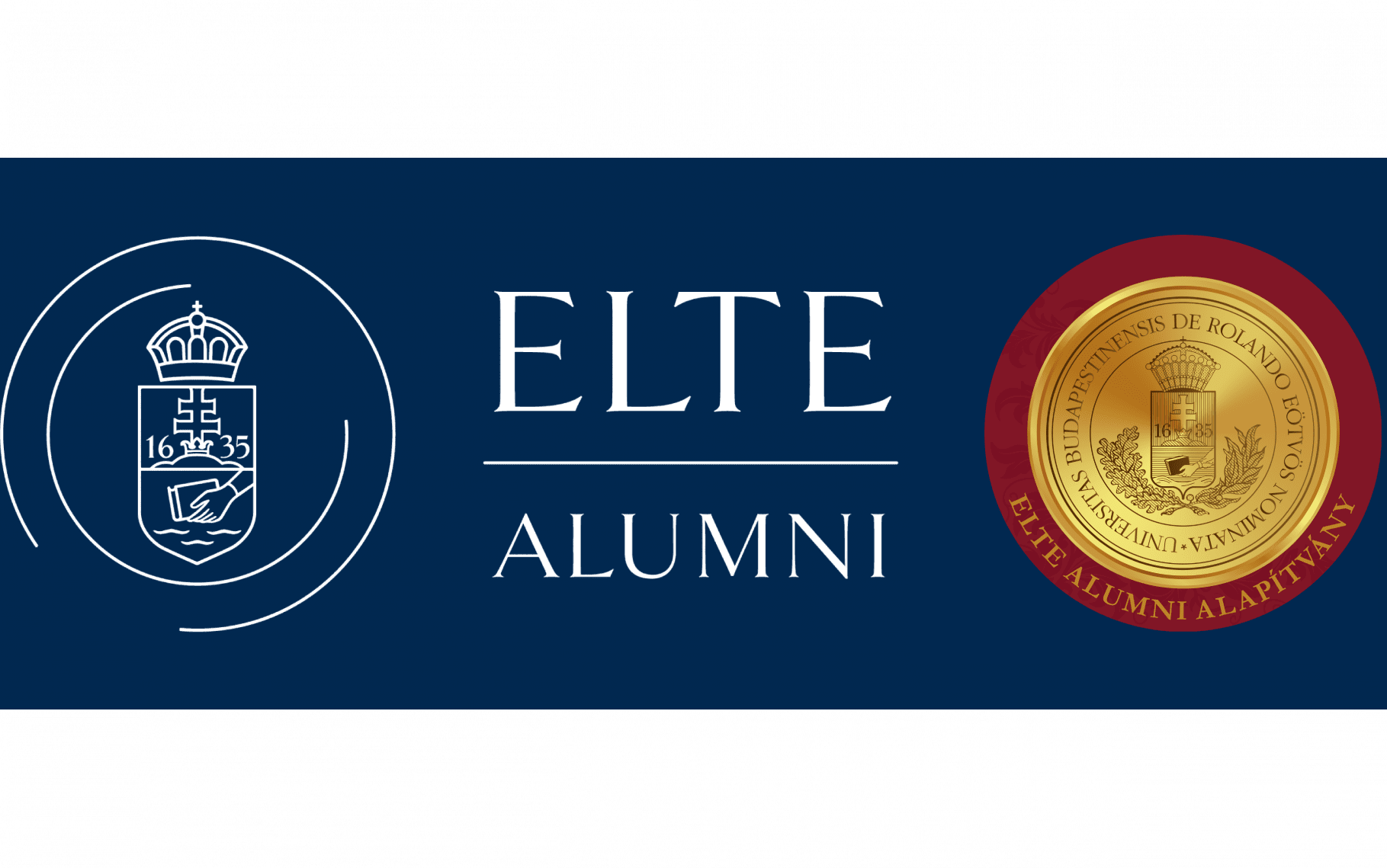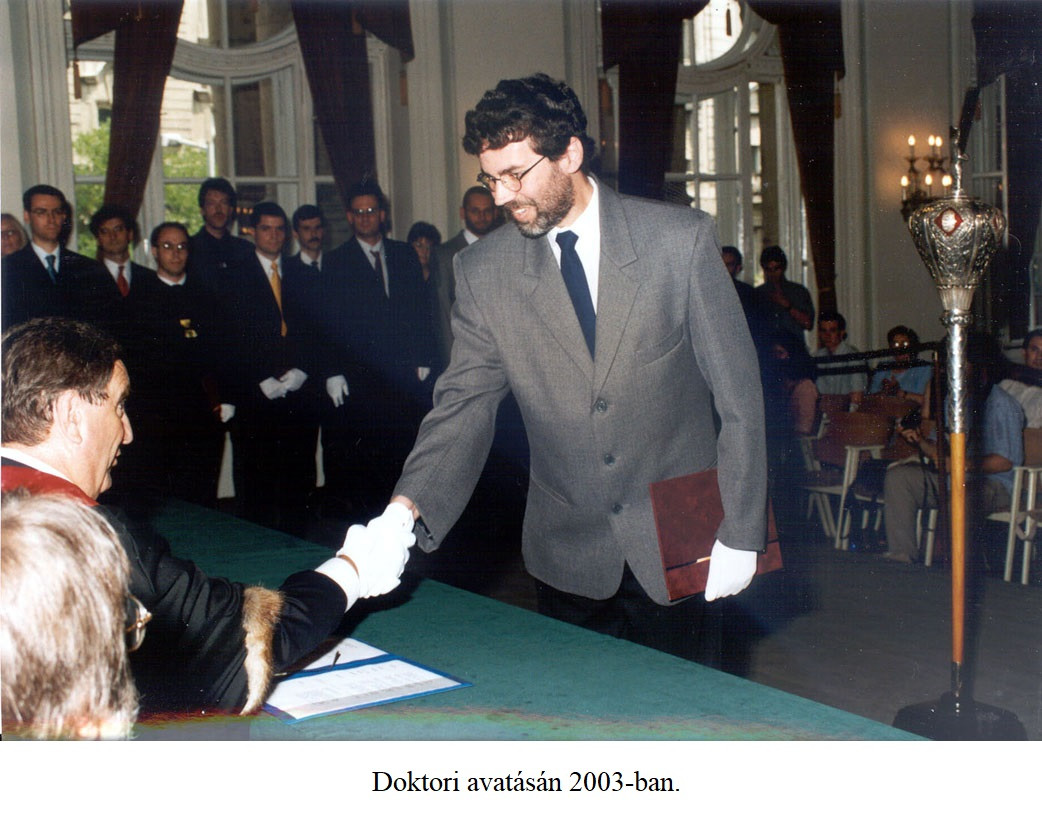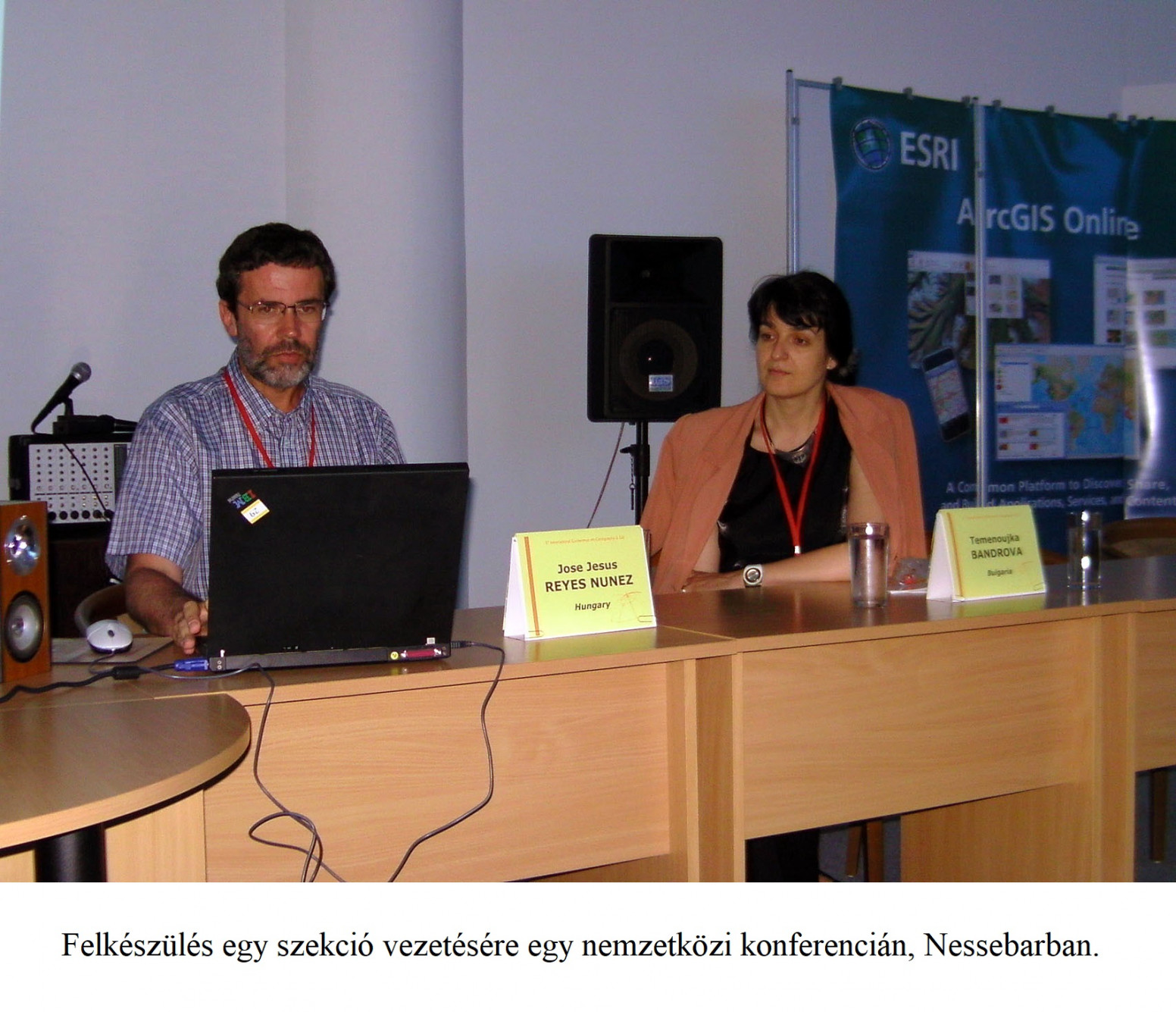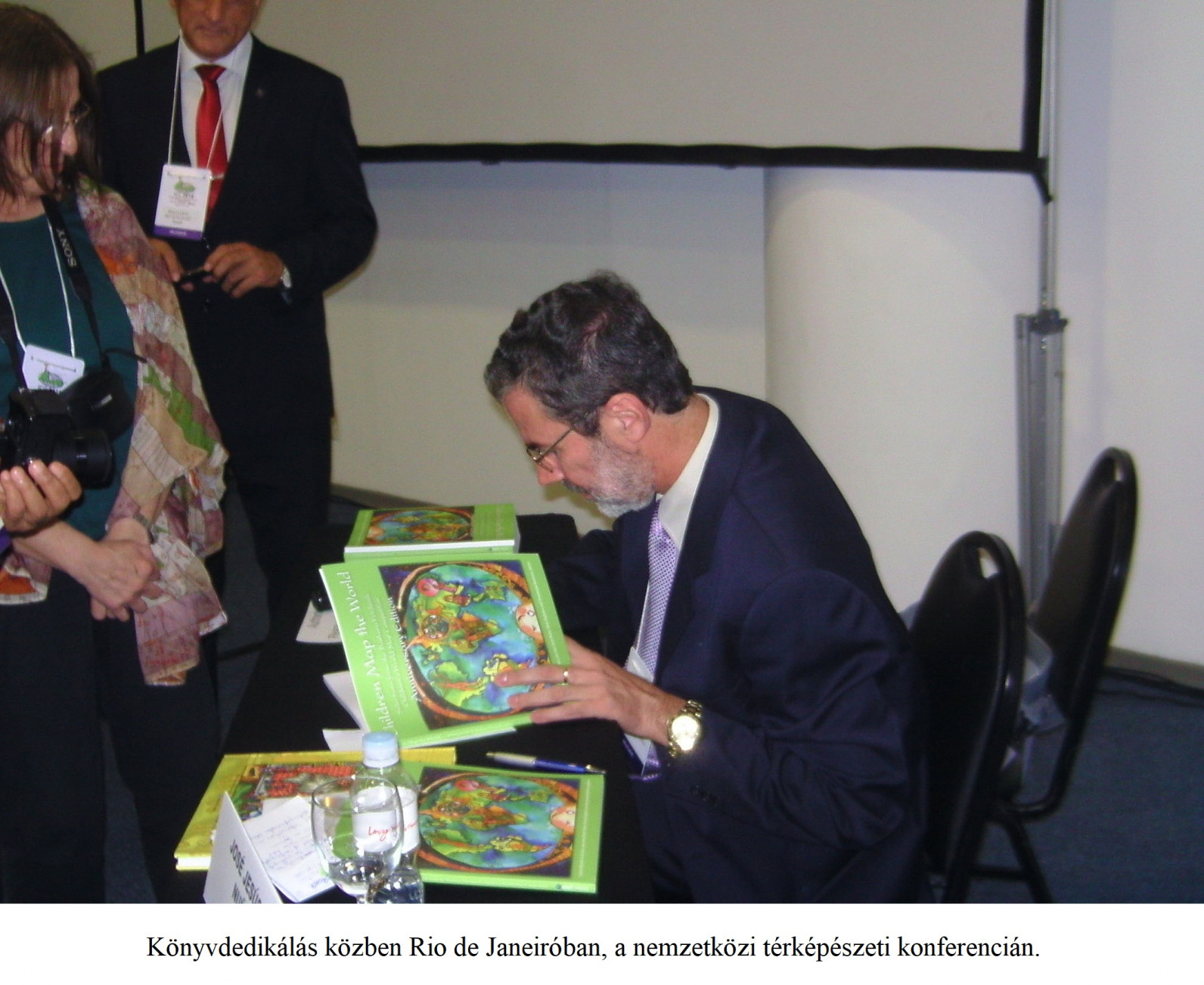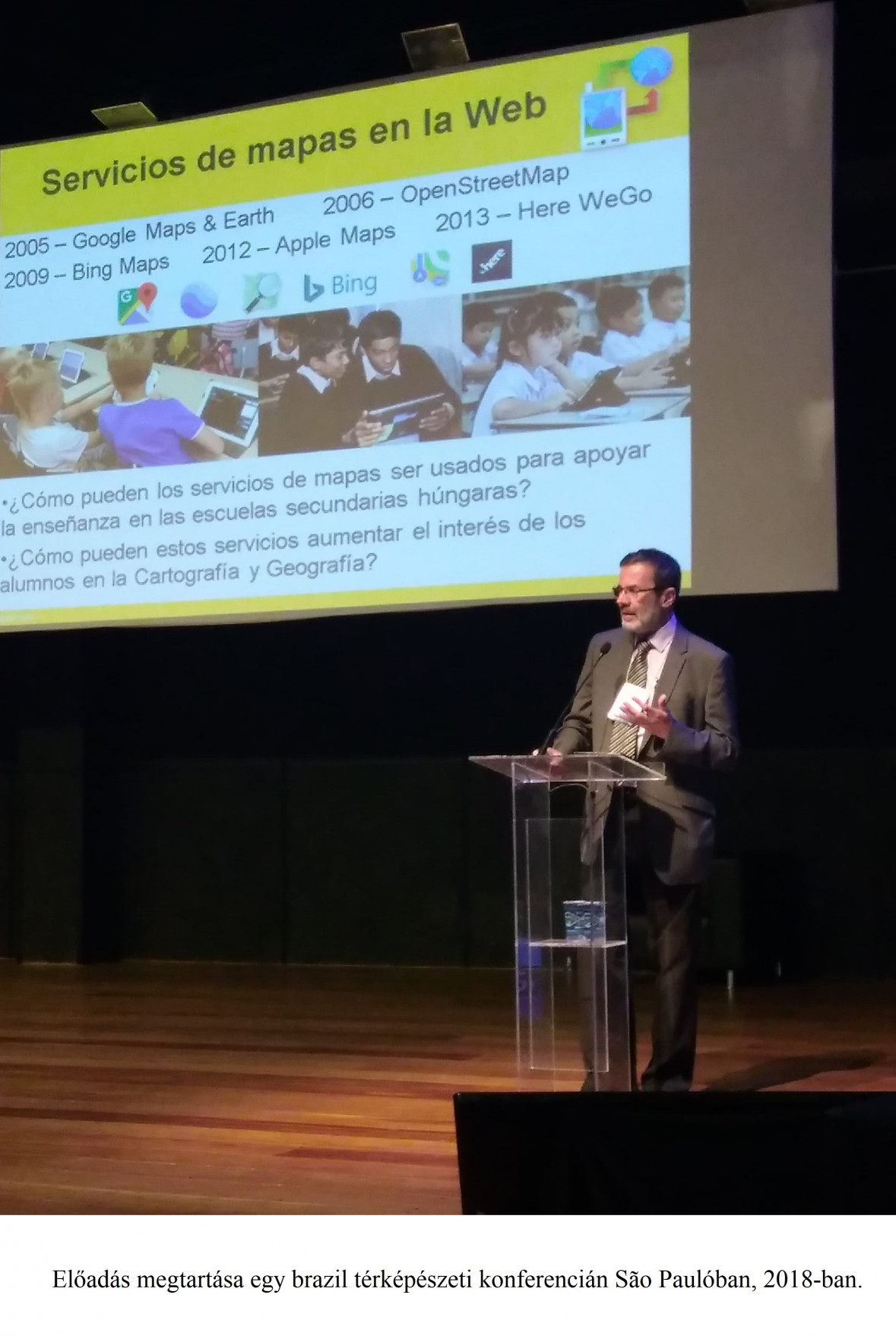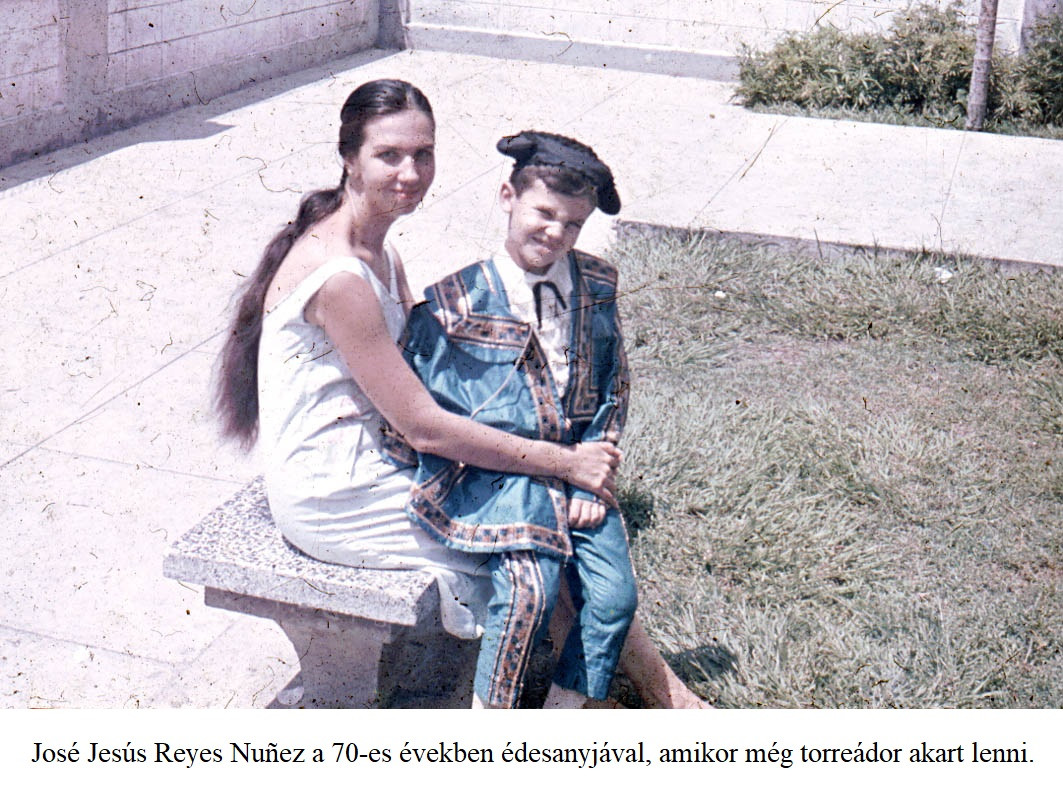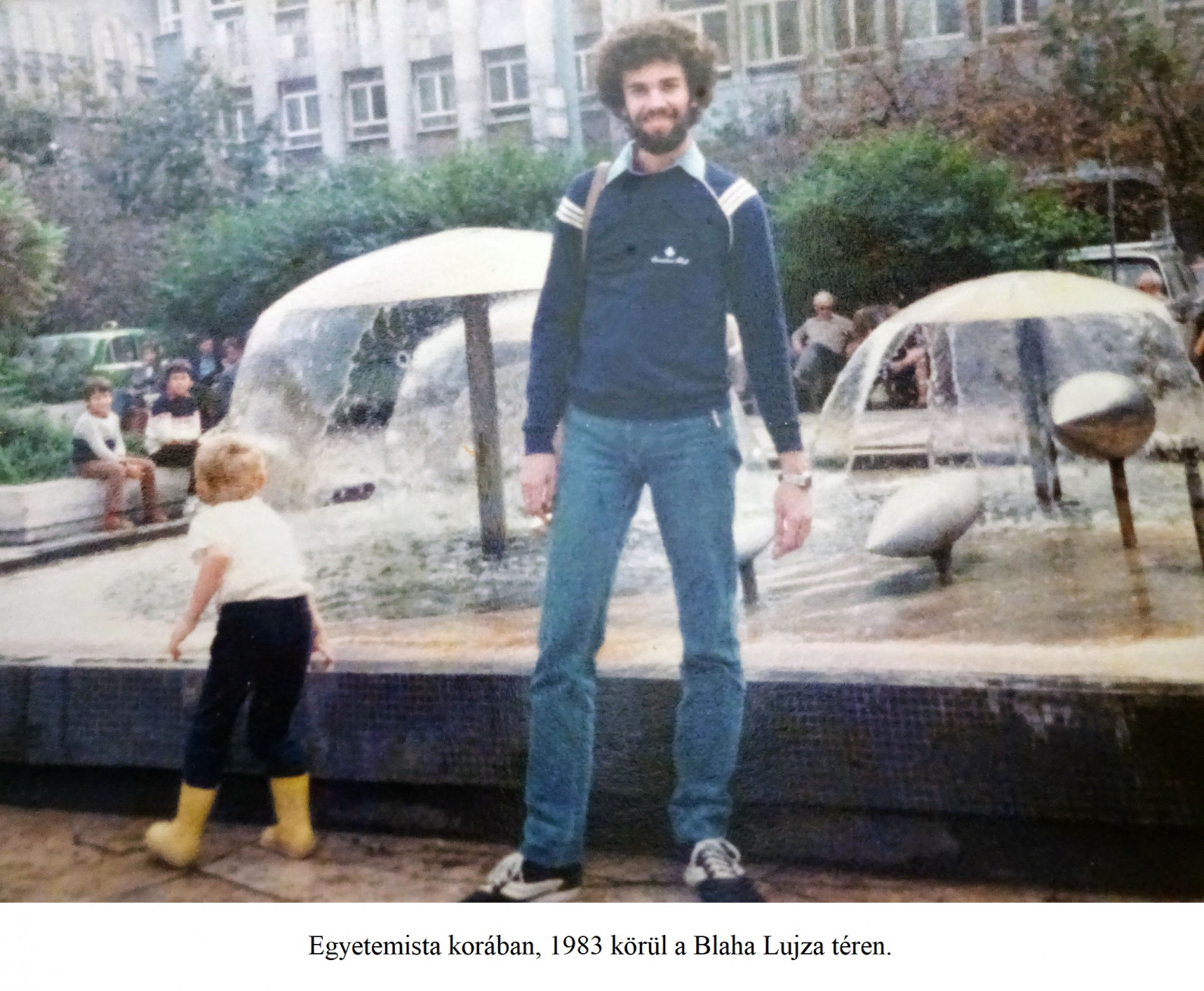ELTE PEOPLE FROM DISTANT LANDS – AN INTERVIEW WITH DR. JOSÉ JESÚS REYES NUNEZ
Dr. José Jesús Reyes Nuñez, Vice-Dean for International Affairs and Projects at the ELTE Faculty of Informatics, was born in Havana, Cuba, in 1962. After completing his elementary and secondary school studies in the island country, he was a student at the ELTE Department of Cartography between 1981 and 1986. Subsequently, he moved back to Cuba and worked at the Research Centre for the Institute of Cartography and Geodesy. He returned to Hungary with his family in 1992 and has been working at our university since 1993. He enhanced the reputation of our alma mater first as a tenured teacher, and then as an assistant lecturer. In 2003, he obtained his doctorate. He defended his Ph.D. thesis summa cum laude. From the same year onwards, he was actively engaged in the work of the Institute of Cartography and Geoinformatics as an assistant professor. In 2007, he was appointed associate professor. His main fields of research involve digital mapping, teaching cartography to children, and maps made for the blind and visually impaired.
Have you always wanted to do cartography? When did you become interested in this discipline?
Of course not... When I was a child, my biggest dream was to become an archaeologist, although my father’s friends kept trying to convince me that I would not have much work in Cuba as an archaeologist. At the same time, I was around 9 or 10 years old when one day my dad brought me a book as a gift. It was the novel “Five Weeks on Airship” by Jules Verne. I started reading and felt for the first time that I needed a map so that I could also follow the plot “geographically”. At that time, I only had an old American school atlas from the 1950s at home (I don’t even remember which publisher issued this atlas) and I started searching where the places were on it. Afterwards, I read one young-adult novel by Verne and other authors after the other, and – unconsciously – I began to use maps more or less regularly. However, it occurred to me that I wanted to study cartography only when, at the beginning of my last year in secondary school, I saw an advertisement about opportunities for studying abroad in various disciplines, including cartography.
How did you arrive in Hungary? Why did you choose our university?
I didn’t primarily choose ELTE, but cartography and Hungary. In the early 1980s, a notice was placed at the entrance of my secondary school in Havana with a list of (exclusively socialist :)) countries where we could apply for tertiary studies. Interestingly enough, if I had stayed in Havana, I might have majored in humanities, probably French or English literature. However, as was I skimming through the majors offered abroad, my eyes fell on cartography. I couldn’t see anything else after that. I don’t even remember what other majors were on that list. Cartography could be studied in three countries. The first was the Soviet Union, which I automatically excluded without thinking :). So, two other countries remained: Czechoslovakia and Hungary. Concerning Czechoslovakia, I noticed that too much emphasis was placed on engineering in the course description, and I didn’t like it that much. In the case of Hungary, however, I felt that the description was quite close to my (probably) romantic ideas of what cartography could be, and that’s why I decided to come here to study. At the same time, I was faced with a crucial question. In reality, I knew nothing about Hungary back then... but that’s another story :).
What is your favourite university memory or experience from the time when you were an ELTE student?
My experiences in Hungary didn’t begin at ELTE, because I spent one year at the International Preparatory Institute before that. We studied the Hungarian language there, and that year meant a lot to us, international students. As far as my favourite university memories and experiences are concerned, I would mention the one-week apple-picking camp somewhere in the vicinity of Vásárosnamény, by the River Tisza. What made it so special was that we still didn’t know anyone at the university except for our fellow students from the dormitory and also that it was a single occasion throughout my studies at ELTE. I also remember quite a lot from our first week of the term-time when we started to explore the university together. We had to rush from one lecture hall to another, even from the Museum Boulevard Campus to the Clinics, and back, so that we would be at the next class in time. Additionally, because I majored in earth sciences, I would also mention the field trips, of which there were at least two or three per academic year. I studied cartography from the 6th semester, and we had fieldwork every summer, which we also enjoyed a lot.
Did you have any professors that you have nice memories of?
There are several lecturers that I have very good memories of, but I am in the very fortunate position that six years after graduating from university I could start working “at the place” of my studies and my former professors became my colleagues... I feel that it would not be fair if I mentioned only one, two, or three names here.
You have been teaching at our university since 1993, and since August 2019 you have been the vice-dean for international affairs at the Faculty of Informatics. What was it like to return to teach at the university where you had been a student some years earlier?
It may sound like a cliché, but it felt like coming home. I really enjoyed meeting and talking with my former teachers again and getting the honour of calling them my colleagues over time.
Do you have any friends you met here and with whom you’ve kept in touch ever since?
We hold class reunions with former cartography students almost every year. Even though not coming together so often and not everyone can be present, we meet from time to time and talk about the past period. We tell each other what we are engaged in and what’s going on in our lives.
What is your experience with the Hungarian language? What was the hardest thing for you to learn?
I have noticed that as the years are passing by, I only “want to remember” the most beautiful or pleasant moments; this is also relevant for those memories that are related to learning Hungarian. However, there were certainly difficult times because I remember, for example, how much time I spent thinking about the way to solve my homework assignments in the first weeks and months. In the beginning, the most difficult thing was that the Hungarian sentence structure is often completely different from the syntax used in Neo-Latin languages. In addition, I had to get used to the fact that Hungarian does not have as many past tenses as the Spanish language... For example, in the early days, we were puzzled when we wanted to express the continuous present tense in Hungarian. However, most of my memories are related to the nice moments of learning Hungarian, maybe because we had a very good teacher. His name was Sándor Lilienberg and he used to teach at the ELTE Faculty of Humanities. He assured us that there is no such thing as a difficult language. At most, we may encounter a language that requires more practice before we can master it.
Do you have a favourite Hungarian word?
I couldn’t mention any particularly favourite Hungarian word... I don’t think there is any. However, I have a story about a Hungarian word that might be interesting. We arrived in Hungary on 25 August 1980 without knowing a single word of Hungarian. (For a few years, some attempts had been made to teach the Hungarian language in Havana, but it turned out to be a failure and the Cuban authorities realised that the Hungarian language could only be successfully acquired in Hungary.) After our arrival, we still had two free weeks before the start of the academic year, which we naturally spent by getting to know the city. I was listening to the conversations of Hungarians on trams and buses in silence, and it seemed as if it was an (unintelligible) continuous stream of speech without any pauses, and comprising sounds pronounced in the same way. Yet, in this continuous speech stream, while I could still hardly or not distinguish the individual words at all, there was one word that I always recognised on hearing it. It was the word MINDEN. At that time, I had no idea what it meant, when it was used and why, but it always stood out in the sentences. It was certainly used in a variety of ways – minden (‘everything’), mindenki (‘everyone’), mindenkor (‘every time’), mindenség (‘universe’), and so on – but I always recognised the word or syllable MINDEN the moment it was said…
Which of the major cultural differences was the hardest for you to get accustomed to?
There are cultural differences between each and every nation, but in Hungary, I have never felt facing “insurmountable” differences. Of course, there are some minor differences, such as encountering dishes for the first time that are completely unfamiliar to a foreigner. For me, such dishes include sweet (poppy, walnut, etc.) noodles since in Cuba you can only have noodles with tomato sauce. (That being said, I got to like sweet noodles very much). A story has just come to mind that perhaps best conveys these small differences. On a weekday evening, about a month or two after our arrival (it could have been late September or early October 1980), with four or five Cubans, we decided to go to the Budapest Amusement Park and have some fun there. None of us had been there before. We had dinner and left Fehérvár Road around 8 p.m. We got out of the underground station next to Széchenyi Bath, and, to our great surprise, we were surrounded by complete darkness. Maybe it wasn’t that dark (but that’s how I remember that moment). At least, there was absolute silence around us. At first, we thought that we got off at the wrong place. However, we could see the name of the underground station, saying “Városliget,” and we had the map in our hands. Almost “fearfully” and “timidly”, but certainly confused, we set off based on the map, and all of a sudden, we could make out the silhouette of the tall wooden structure of the roller coaster in the dark sky. Our astonishment grew even bigger when we saw with our own eyes that the Amusement Park had already been closed before 9 p.m. How come it closed so early? Only then did we realise that there was nobody in the neighbourhood, just us... in fact, only three or four people were travelling beside us in the underground... heading home for sure. :)
Do you have a beloved place in Budapest and maybe some favourite Hungarian food or drink?
One of my favourite places in Budapest is the Castle District. I like simply strolling around the old buildings. Perhaps that’s why one of my favourite Hungarian cities is Eger. I first went there at Easter 1982, together with three of my classmates. It is more difficult to choose my favourite Hungarian dish for I have so many of them. I would maybe mention one that is completely ‘alien’ to traditional Cuban cuisine, and this is paprika chicken with noodles called galuska, as my mother-in-law and my wife prepare it. The first and most essential condition for this is that the noodles should not be bought in a store. They must be homemade :). Otherwise, I feel lucky as we can prepare and even combine recipes from two countries on one table… we have had fusion cuisine for years without being aware of it :).
What do you miss about your home country the most?
This is an intriguing question. People can’t help but say or think to themselves: my home country is the most beautiful because I was born there, I was raised there, and I’m proud to be Cuban (or Hungarian, for example). And we mean it, we truly feel it. In everyday life, however, this ide becomes more complex, because it is also affected by pleasant or unpleasant daily events. In Cuba, there are too many problems on a daily basis (even today), which is why my wife and I decided together to return to Hungary. I have never regretted our decision, and I am very happy that my children have grown up here and my grandchildren will also be raised in this country. If I should also mention more trivial things, I would say, for example, that I am also happy to see snow here. I have never learnt to ski, though :). Despite all these, I must admit that I sometimes miss the blue sea. Lake Balaton is beautiful, but it cannot (and, in fact, should not) replace the sea. I also miss the summer afternoon rains. However, (fortunately?) in recent summers, sometimes there has also been rain here that reminded me of home. Most Hungarians may not be happy to hear it, but the humid heat is also something that can be missed. For years, my Hungarian colleagues and friends have been trying to convince me how much better dry heat is than humid heat. Well, so far, they haven’t managed to do so :).
Your biography and publication list reflect that you are passionate about what you are doing. How can you find time for everything?
(Smiling) I really enjoy everything I do... but, unfortunately, I couldn’t say I can spare enough time for everything: I still have a couple of unrealised ideas as I haven’t had enough time for them.
What made you interested in children and school cartography?
Approximately two years after completing my university studies, I started to be interested in maps made for children. This happened while I was still in Havana. In our free time, a colleague and I started working on a pictorial atlas of the history of Cuba to the late 19th century. We made five or six plans, took them to the country’s only book publisher that gives out children’s books, and our proposal was accepted. Unfortunately, this never materialised, as in 1989, due to the regime change in Eastern Europe, Cuba underwent a major crisis, and book publishing almost completely stopped due to the lack of funding. I started working at the ELTE Department of Cartography in January 1993, and in April, the department held an international symposium in Visegrád. I met there Jacqueline Anderson, who was a lecturer at Concordia University in Montreal and was already thinking about establishing a specialist committee within the International Cartographic Association that would focus on maps made for children and maps used in schools. We stayed in touch and the working group was established in 1995. It was from this working group that the Commission on Cartography and Children was formed in 1999. I feel lucky to have been one of its founding members. Since then, Jacqueline has retired, but many of us keep on working and contributing to the activities of the committee.
Why do you find it important to teach schoolchildren how to use an atlas properly? What deeper knowledge can be gained from maps that we would not think of as non-professionals?
Good maps are special and unique tools of illustration because only with thematic maps can we locate specific data of interest in space – and using animation techniques, even in time. Additionally, we can present more general information on dynamic maps using the currently so popular story maps. The school atlas is the first map that children encounter, and using them, they learn how to obtain various data and information from a map. However, it would be very important if students experienced in the first years of school that the use of the map is not limited to geography or geography-related subjects. Maps can be utilised in the teaching of several subjects to supplement the information taught with more traditional methods and to make the subject more intriguing. As a rule, it is customary to use maps in history lessons, but no wonder that, for example, literary atlases for schools have also been published. The life path of a writer or the plot of a novel can be quite frequently followed very well on a map. Nevertheless, we would be narrow-minded if we limited today’s cartography to the usefulness of two-dimensional maps only. We shouldn’t forget about three-dimensional models, either. These offer the students a more understandable and quicker overview of a mountainous area, for example.
It should also be mentioned that the current general use of maps is supported by the use of web map services with mobile devices. It has become an everyday activity that before going somewhere, we start the map service on our smartphone and check what route we need to use and even which means of public transport we should take to arrive there the earliest. For this reason, more modern solutions should be introduced in primary and secondary schools. Researchers, in cooperation with teachers, ought to determine how web map services can be used most effectively, not only to supplement traditional teaching in class but also in what tasks students can use these services (and applications based on them). The students could (why not?) also perform these tasks outside the classroom (for doing their homework, for example).
In today’s rapidly developing world, digital solutions are increasingly gaining ground in education as well. However, these methods can also have negative impacts on children, beyond the obvious benefits. How do you think the right balance can be found between traditional teaching methods and the application of modern tools?
This question already comprises the answer since maintaining the balance between the traditional and digital worlds is vital for engaging and effective teaching. In Hungarian schools and education, the presence of traditional solutions is still more pronounced than that of digital ones. Over the last few years, digital solutions have gained ground in traditional education, but I don't think they will become “predominant.” In fact, there is no need for that at all. Instead, a kind of “natural” cooperation between them would be the right way towards a modern and diverse educational system. In recent years, for example, teachers have increasingly encountered QR codes in printed textbooks. These codes indicate that the content of the book is supplemented with digital materials stored in the so-called web or online cloud. For a student, this is self-evident. It is the most natural act for them to scan that code with their smartphones and have a look at the content, which is a very positive development. Their teacher, on the other hand, can organise a field trip so that the students can see “live” (that is, in nature) what they have learnt in the lessons. During the field trip, the teacher can ask the students to take their mobile devices and use a GPS-based compass application to find their way around the terrain or simply open a map service to see which way to go. These are just two examples out of many, based on which we can have an idea and imagine how the necessary cooperation and balance between traditional and digital solutions should be realised. Since the emergence and use of the latest technologies in students’ everyday life is inevitable, education should keep up with the resulting demands and turn these demands to its own advantage. If the teacher recognises and implements the balance between traditional and digital teaching, this will also serve as a kind of guarantee that the student will learn the subject taught by the teacher more easily and willingly. Thus, the teaching activity develops positively and becomes more complete and successful.
What are you engaged in at the moment? What is the focus of your research?
My research is related to school cartography in some way. I am currently very interested in a topic: the use of web map services in schools. Unfortunately, relatively few people are still using them in teaching in Hungarian primary and secondary schools, but I truly want to believe that this situation is going to change. Besides, a couple of years ago, I started to be interested in a cartographer of Hungarian origin who had emigrated to the United States in the early 1920s and became world famous there. His name was Erwin Raisz and he was a person combining everything in cartography that is personally related to me as well, namely school cartography, Hungary, and Cuba. Raisz worked closely together with Cuban geographers and cartographers for many years, which is why we can find his name in several publications that are regarded as fundamental works in Cuban geography and cartography. It is very difficult to find the necessary resources to continue my research only relying on the Internet. I believe there is still a lot to be done and discovered concerning the relationship Raisz had with Cuba.
Do you have a favourite map?
I have several favourite maps, so it is impossible to single out one. I love all the maps (that I know of) by the Hungarian-American cartographer Raisz Erwin for each one is a unique piece of art. The map of Havana made by Thomas Bowles, a probably lesser-known English cartographer, in 1739 also stands out among my favourites. I used this map when I was writing my thesis. The original map is found in the Map Collection of the Széchenyi National Library (and a copy is hanging on my wall at home). Furthermore, I admire a lot of maps and drawings made by children, because they also tend to be unique. It is easy to find them because the ELTE Institute of Cartography and Geoinformatics has been taking part in the organisation of an international cartography competition since 1999. The works representing Hungary in the finals can be accessed via the link http://terkepismeret.elte.hu/VERSENYEK, and if you are also interested in the maps submitted by other countries, you should visit the website https://childrensmaps.library.carleton.ca/. I can assure you that you will not be disappointed with them.
According to your experience, have more university students become interested in your discipline in the past decades?
Cartography has become more diversified over the last 30 years. Maps have transformed significantly. They have become digital and literally appeared in all areas of life. Nowadays, if we want to go somewhere, it is the most natural thing that we search for that place on the map using our smartphones. We can even plan the shortest route and access our destination with the most suitable means of public transport. As a consequence, for a few years now, cartographer and/or geoinformatics specialist jobs have become one of the most wanted positions in some countries (such as the United States). In Hungary, this is not so noticeable. Here, fewer students are studying cartography, but it is definitely noteworthy that, indirectly, the map as a spatial representation of the dataset processed is increasingly used in several university courses. And that is why, next year we will be launching the Geoinformatics course in cooperation with the Institute of Geography and Earth Sciences at the Faculty of Science.
How would explain the appeal of ELTE? In what areas should our alma mater develop?
The answer that came to my mind without thinking after reading the question may sound surprising, all the more so because I am not talking about the present but the past. When I was a student, the appeal of the university lay in the Hungarian language for me, and in what the knowledge of the Hungarian language represented. I could join my classmates at the lectures and talk to them in their mother tongue, although in the first year, it was mainly them who taught me to speak :). This is a simple thing but it was still a wonderful feeling. At the same time, I was able to listen to the lecturers’ presentations in Hungarian, their “own mother tongue”, which made the learning process much more exciting, even if in the first year it was very difficult for me to follow what they said.
These days, foreign students don’t have such experiences because they are taught in English. Although they can join in the academic life of Hungarian students, it is not quite the same as when we, foreign students, could become “real members” of the Hungarian group and talk to each other in Hungarian.
So what can the appeal of ELTE be today for a student? Perhaps the same thing that made me leave for Hungary at the age of 18, when I knew hardly anything about the country: curiosity about the unknown. But in my opinion, it is mainly the hope (and this is an area that should always be kept in mind) that I am going to study at a university in a small country that has very old traditions but can still provide a student with modern, even futuristic knowledge. For this reason, it is necessary that our instructors continuously extend their knowledge and keep it up-to-date. It is also important that they can convey that knowledge to their students in an intriguing way, which makes the students notice and appreciate their teachers’ efforts.
Additionally, the university must also be able to offer not only high-standard education but also a quality lifestyle. It should turn the international students’ stay in Hungary into a good experience with high-quality housing options, valuable and exciting programmes, and much more. We should make them feel that the relationship between ELTE and its students is much better than what any other higher education institution could offer because we are aware and convinced that international students will always be the university’s best ambassadors in the world.
What would be your advice to those university students who are hesitating to go and study abroad?
In brief: do not hesitate! We can only really learn how many benefits living in another country have once we are there. This is something that everyone should experience at least once in their life.
Image courtesy of José Jesús Reyes Nuñez

Image gallery10
Comments0
Please log in to see or add a comment
Suggested Articles
